Tehran University Fires Lecturers For Supporting Protests
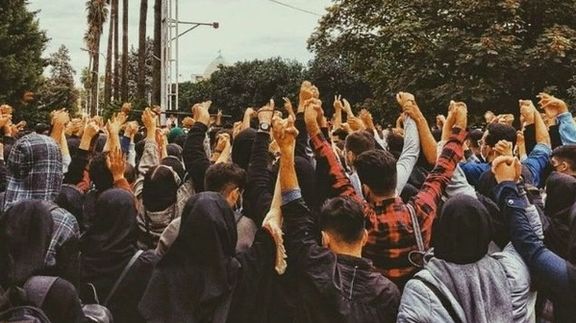
Six sculpture teachers at Tehran University of Arts have been dismissed for supporting nationwide protests against the Islamic Republic.

Six sculpture teachers at Tehran University of Arts have been dismissed for supporting nationwide protests against the Islamic Republic.
Mohammad Hossein Emad, Hamid Shans, Iman Afsarian, Pooya Arianpour, Bijan Ghonchepour and Rasoul Akbarlou, are among a wave of sackings and suspensions which come as crackdowns against uprising supporters continue across the country.
During the nationwide protests in Iran following the death in custody of Mahsa Amini, universities have been one of the main hubs of protests with hundreds of students being arrested, in addition to targeted poisoning attacks as the regime sought new means of suppressing unrest.
Meanwhile, in solidarity with their teachers, students at the institution have said they will boycott classes in protest while a number of fellow sculpture professors also supported the action by publishing a statement and refusing to teach.
Back in February, 120 students and graduates of Tehran University of Arts protested the suspension of professors by publishing an open letter. Addressing the dean of the University of Arts, they expressed anger over the suspension of two faculty members, Amir Maziar and Korush Golnari.
The regime continues to deny such dismissals and suspensions relating to the ongoing political unrest.Morteza Farrokhi, the Legal Deputy of Science Ministry stated in February that "if there are any cases of dismissal, it has been due to their academic incompetence."
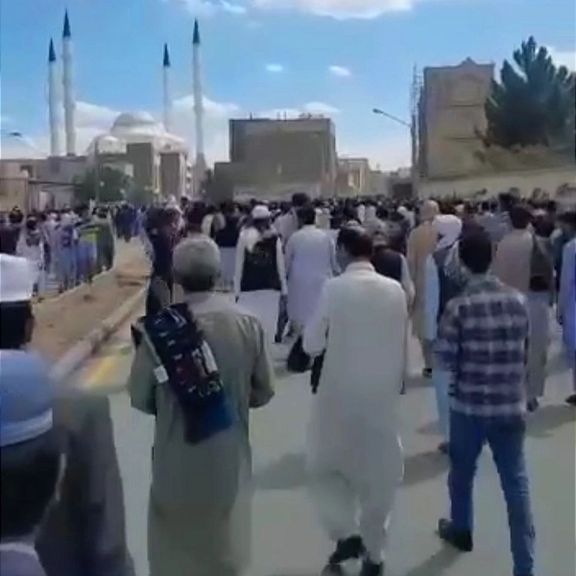
Friday was another weekend of protests in Iran’s Sunni majority Zahedan, with the city’s top cleric delivering another sermon on how the Islamic Republic failed to be a republic.
Amid another internet shutdown in the city, Mowlavi Abdolhamid talked about how the regime’s “religionism and ethnicism” have moved the country away from a true republican system in which people choose their representatives through elections.
The people of Zahedan have been protesting every Friday since September 30, when security forces opened fire on civilians, killing nearly 90 protesters.
He said that today people from all walks of life and different professions are protesting, while those who hold managerial posts are neither efficient nor experts and have no authority.
He referred to the anniversary of the referendum on creating the Islamic Republic-- held in Iran on 30 and 31 March 1979 – saying that people voted in favor of a republic to have a say in the important decisions of the country. “It (the referendum) was a beautiful and good opportunity for the government to use the capacity of Islam to spread the umbrella of equality for all citizens of Iran, both men and women and religious and non-religious," he said, noting that Islamic governance did not spread equally on all people and many atrocities were committed against different minorities.
During more than 40 years of clerical rule, the religious people who were openminded were sidelined, let alone the non-religious people, he said, noting that those in power are the ones who only pretend to be religious.
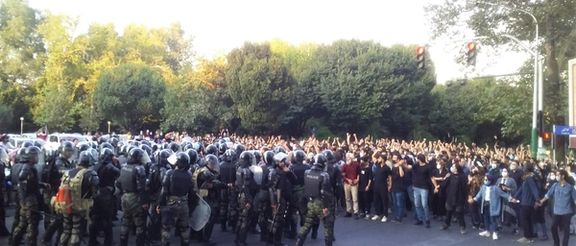
A group of former and incumbent diplomats as well as rights activists have established a Jewish Committee to support ‘Woman, Life, Freedom’ movement in Iran.
The group, which announced its establishment on Friday, said that its mission is “to connect the American Jewish community with the Iranian diaspora to support their efforts to amplify the voices, vision, and dreams of the Iranian people in Western capitals.”
The Jewish Committee also says it will promote grassroots support for the Iranian diaspora protesters and will also be raising funds within the American Jewish community to offer microgrants to support protest activities around the world.
“The history of organized American Jewry has reflected the core Judaic values of justice, respect, community, and repairing the world... Those same Judaic values inspire the creation of a committee to support the Woman Life Freedom movement and the people of Iran who face death and torture in the cause of freedom,” the groups added.
Several former US senators and representatives such as Joseph Lieberman, Norm Coleman, Eric Fingerhut, and Ted Deutch as well as two former US ambassadors to the UN, Mark D. Wallace and Dennis Ross, are among the nearly 20 founding members of the committee.
“With governments, news media, and activists distracted by global events, there has been inadequate support for the Iranian people in the face of the brutal human rights abuses by the Iranian regime," the committee underlined. “It is critical to recognize this historic movement in Iran and to help sustain its momentum."
The US is home to 60-80,000 Iranian Jews, the second largest diaspora community after Israel, home to around 250,000, most of whom fled in the years following the revolution. Just 10,000 Jews remain in Iran today.

Since Mahsa Amini was beaten to death by hijab enforcers in September, sparking nationwide revolt, the simple act of unveiling in public has been a thorn in the side of the regime.
Despite numerous new measures to curb the trend, more women are daring to be seen without headscarves on streets, in public buildings, and on social media, shaking the foundations of the theocratic dictatorship to the core.
Life after the Mahsa Amini incident will never be the same. For many, the hijab has gone for good but the country’s hardliners will not relent in their battle.
In a determined statement on Thursday, the Islamic Republic’s Interior Ministry described the hijab as "one of the foundations of the civilization of the Iranian nation" and "one of the practical principles of the Islamic Republic.”
"There has not been and will not be any retreat or tolerance in religious principles and rules and traditional values, and hijab, as an unquestionable religious necessity, will always be one of the practical principles of the Islamic Republic of Iran," read the statement.
But, never have Iranians been forced to cover their hair throughout their millennia-old culture, and the Islamic Republic – along with Taliban Islamist extremist group in Afghanistan — is the only Muslim country with such a strict interpretation of hijab and nationwide coercive measures for its observance.
The unrest created since the death in morality police custody of 22-year-old Mahsa Amini has made it increasingly difficult to enforce the mandatory Islamic dress code which has become a symbol of revolution.
The tide against the hijab was never as strong as it is today. Anti-hijab campaigns such as ‘White Wednesdays’, ‘Girls of Enghelab Street’, ‘No to Mandatory Hijab’, and ‘Sneaky Freedoms’, have been branded plots by “the enemy” to disrupt the idea in the minds of Iranian women.
The mere existence of so many campaigns against the obligatory dress code is indicative of its low popularity among the people.
In addition to the regime suggesting that the anti-hijab movement is "one of the axes of the enemies’ cognitive war against the nation”, the Interior Ministry has also called the “Women, Life, Liberty” -- the main motto of the current wave of anti-regime protests – a “demagogic slogan” devised by the intelligence agencies of adversaries to conceal their evil intentions.

The conspiratorial statement - typical of the regime rhetoric - claimed that the schemes of the movement have been foiled but the people but did not explain that if such is the case, why the Islamic Republic has been intensifying measures to enforce hijab. Workshops and seminars are being pushed on women to quash the female-led uprising against the regime’s hackneyed propaganda lines.
The ministry has also incited numerous clashes as it urged organizations as well as ordinary citizens to confront women who unveil in public, emboldening the hardliners to attack women and girls with loose-fitting hijab in public because they know the authorities will back them in courts if the rows lead to judicial cases.
Earlier in the week, it was announced that women could be fined as much as $60,000 for flouting hijab observance when a new law to enforce the Islamic dress code is passed by parliament.
These penalties will apply to passengers who do not abide by the hijab rules everywhere from in private vehicles to schools, restaurants and even in cyberspace. Nobody is above the law either, celebrity or otherwise, said lawmaker Hossein Jalali.
As surveillance intensifies, the regime also plans to use CCTV cameras and facial recognition technology to identify women who flout the hijab, and use cash fines and social restrictions to punish them including blocking their bank account and banning them from internet access or using governmental services.
Since the death of Mahsa Amini, the morality police may have had to step back from public life somewhat, but the swell of rebellion remains a bitter pill for the regime to swallow as they seek new means of oppression.
Four decades after the Islamic Republic forced women to wear headscarves, it is clear that change is afoot. Who knows what will be in the near future, but the tide has turned and no matter the levels of oppression and surveillance, there is no doubt there is no going back. The regime is fighting a losing battle and it has lost the hearts and minds of its people.
Women are prepared to sacrifice their lives to ensure the futures of the next generation and we are witnessing a resilience even the tools of dictatorship seem unable to quash.
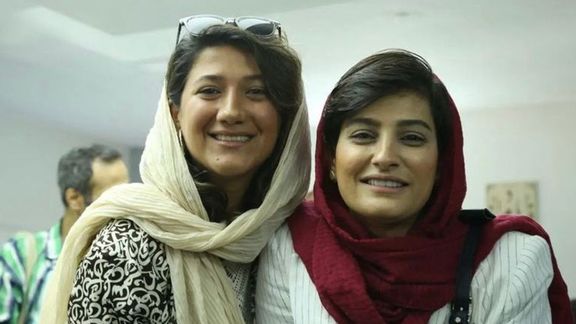
Two imprisoned journalists have been awarded Harvard’s Lyons Award for Conscience and Integrity in Journalism while they serve time for reporting the death of Mahsa Amini.
Niloofar Hamedi and Elahe Mohammadi were arrested six months ago for coverage relating to the controversial death of the young Iranian-Kurd, who died in morality police custody, sparking months of nationwide protests.
The Nieman Fellows Foundation for Journalism at Harvard University honored the journalists, who worked for Shargh and Hammihan respectively, for their “steadfast commitment to producing courageous journalism”.
“Hamedi and Mohammadi put their livelihoods and lives on the line, and lost their freedom in the process,” said the statement. “They knew the grave risks they might face but remained committed to telling Amini’s story. Journalists in Iran are risking their lives on a daily basis to report on the conditions and oppression there.”
Since the protests began around 70 journalists have been arrested and many others warned about their coverage of dissent and their public comments.
The Nieman Fellows will honor Hamedi and Mohammadi in absentia during a ceremony this spring.
The Nieman class of 1964 established the Louis M. Lyons Award in honor of the Nieman Foundation curator who retired that year after leading the institution for a quarter of a century. Lyons was a forceful advocate for freedom of the press.
The two Iranians join a long list of over 1,700 journalists from 100 countries to have been awarded Nieman Fellowships since 1938.

An Iranian attorney says several victims of government brutality in the recent protests in Iran have filed legal complaints in several provinces of the country.
Payam Dorafshan told Emtedad News that these people filed a complaint after visiting a lawyer and presenting sufficient evidence.
According to attorney, Majid Khademi, Mir-Hesam Maleki, Reza Ezzati and Pouria Alipour are among the plaintiffs.
Explaining how these people were injured during the protests, Dorafshan said Majid Khademi had gone to the graveyard to offer condolences to the family of a victim, but "on his way back, he was shot from an unknown place and injured in one eye.”
Maleki went out to the street to move his car, but "he was shot in the face from a very close distance with a teargas launcher. Due to the severity of the injury, the bones of the upper and lower jaw and his teeth were completely crushed."
As Dorafshan stated, Maleki "has been undergoing various surgeries for months and has only been able to feed using a straw."
The Iranian lawyer also added that Reza Ezzati, who had gone to visit the grave of his relatives in a cemetery in Karaj west of Tehran, was "hit by many [bird]shots" on the way, and in addition to “eyes and face, even a few shots entered his body and heart.”
Ezzati "was forced to undergo heart surgery and currently one of his eyes has a severe vision defect while a large number of shots remain in his body."
Dorafshan has also asked other families of the deceased and injured to contact lawyers to file a lawsuit.
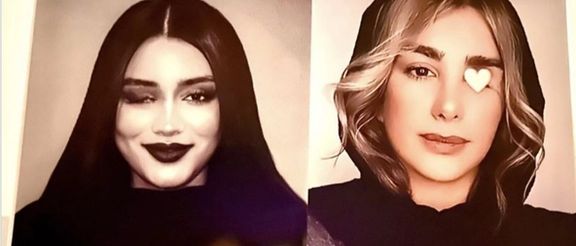
During the recent protests, ignited by the death in custody of 22-year-old Mahsa Amini in September 2022, hundreds of people lost their lives and many more received permanent injuries. The authorities of the Islamic Republic not only failed to accept any responsibility, but put pressure on some of the victims' families who made statements against regime officials during funerals or on social networks.
Activist twitter and Instagram account '1500 Tasvir,' dedicated to news about protests in Iran, has recently published a large batch of harrowing photos and videos of people shot or killed by the regime. The regime’s security forces have been extensively using cartridges of shotshell loaded with numerous small balls or birdshots, or medium-sized buckshots as well as single large solid projectiles known as a slug to quash the nationwide protests.
Late in November 2022, dozens of ophthalmologists issued a joint letter warning against the use of shotgun ‘birdshots’ and other projectiles by Iran’s security forces that have blinded over 500 protesters since mid-September. According to them, a large number of victims were taken to medical centers hit by rubber bullets and metal pellets as well as paintball bullets in their eyes, leading to loss of eyesight in one or both eyes.
The Islamic Republic, which had been previously condemned for blinding protesters in the streets, intensified the use of guns, including military weapons against unarmed protesters. However, young Iranians who lost one or both eyes say they do not regret having protested against the regime.